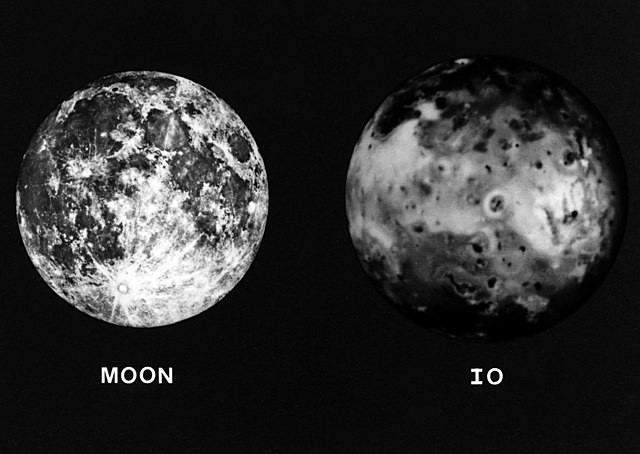
(Photo : Wikimedia Commons/Lunar and Planetary Institute from Houston, TX, USA)
NASA shared an artist's impression of the reflective lava lake on Jupiter's moon Io. The stunning video features Loki Patera, a 124-mile-long lake found in one of the Jovian moons.
Artist Concept of Loki Patera on Jupiter's Moon Io
The concept art was created using the data collected by the JunoCam imager aboard NASA's Juno spacecraft. This data, which includes detailed images and measurements of Io's surface, was processed and interpreted by a team of scientists and artists to create an accurate representation of Loki Patera. The resulting image features an aerial view of the lava lake filled with magma and rimmed with hot lava.
When JunoCam photographed Loki during flybys of the moon in December 2023 and February 2024, it produced a stunning reflection that suggested the regions of Io's surface were as smooth as glass. The sizable island in Loki Patera has no name.
However, it is not a lakefront vacation spot as we perceive it from Earth. The moon has several volcanoes that may reach temperatures of 3,000 degrees Fahrenheit, although its surface is typically a chilly -202 degrees Fahrenheit. These extreme temperature variations are due to Io's proximity to Jupiter and its lack of a substantial atmosphere to regulate heat.
Io orbits Jupiter at a little over 217,000 miles above the planet's clouds, which is somewhat more significant than the lunar distance from Earth.
However, as seen in NASA's most recent video, Jupiter's diameter is around 11 times greater than Earth's. Thus, if one were to stand on the edge of Lake Loki Patera, the gas giant would loom in the background.
The NASA spacecraft Juno, which flew by the lone moon in December and February of this year and came within 930 miles of its surface, provided the data used in JPL's animation. This data, collected by Juno's JunoCam imager, was crucial in identifying and studying Loki Patera.
The lake's highly reflecting surface has long attracted astronomers. However, its glinting nature is caused by entirely different properties from that of Earth's bodies of water. The reflection is not due to the presence of water, but rather the unique composition of Io's surface, which is primarily made up of sulfur and sulfur dioxide.
"Io is simply littered with volcanoes, and we caught a few of them in action," Juno's principal investigator Scott Bolton said during an April 16 news conference. "We also got some great close-ups and other data on a 200-kilometer-long (127-mile-long) lava lake called Loki Patera."
These bizarre islands, which appear to be embedded in a possible molten lake with a scorching lava rim, are depicted in incredible detail, per Bolton. The lake's specular reflection, which our instruments captured, shows that some of Io's surface is as smooth as glass, evoking images of Earth's obsidian glass formed by volcanic eruptions.
ALSO READ: Ice Giants Neptune and Jupiter May Contain Frozen Methane That Explains Their Formation [Study]
Loki Patera: Most Powerful Volcano in the Solar System
Loki Patera is the most active hot spot on Io that faces Jupiter. Two plumes that were not visible during Galileo's early orbits were observed at Loki Patera during the Voyager encounters. During this time, according to ground-based observers, Loki Patera was exceptionally dull, indicating a period of low volcanic activity.
Loki Patera: A Scientific Marvel. It is considered the most powerful volcano in the solar system as it produces more heat than all of the active volcanoes on Earth combined. The volcano features a massive 4,000-mile (10,000 km2) volcanic crater, a caldera, periodically filled with molten lava. This scientific wonder is a testament to the unique geological activity of Io.
Loki Patera is frequently observed by infrared telescopes on Earth, in addition to being often observed by NASA's Galileo spacecraft, which is currently orbiting Jupiter.
Voyager 1 made the initial discovery of Io's volcanic activity in 1979. Since then, the moon has been a subject of intense study, with subsequent missions like Galileo and Juno providing more detailed observations and data. These missions have allowed us to learn more about Loki Patera and its unique characteristics.
RELATED ARTICLE: Metallic Flying Saucer That Comes Out From Cloud 'Definitive Proof' We Are Not Alone, UAP Hunter Claims
Check out more news and information on Space in Science Times.










!['Cosmic Glitch' in Einstein's Theory of General Relativity Could Be Explained in This New Scientific Tweak [Study]](https://1721181113.rsc.cdn77.org/data/thumbs/full/53435/258/146/50/40/cosmic-glitch-in-einsteins-theory-of-general-relativity-could-be-explained-in-this-new-scientific-tweak-study.jpeg)



